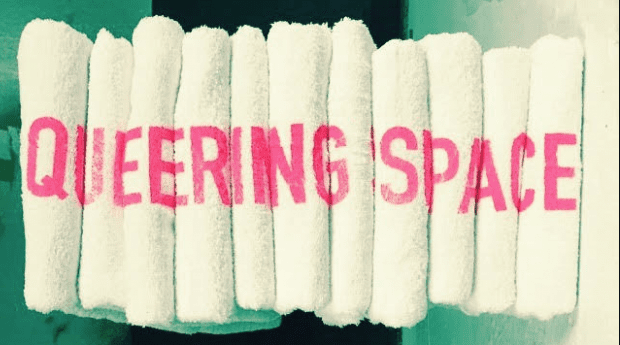Toronto in 2015 is a relatively safe place for us queer folk, so it’s sometimes easy to forget the days when venturing beyond the gay ghetto could be risky business. And while even the most incandescent flamer can now flounce through Parkdale, it’s still great to put our own stamp on areas off Church Street.
Such is the premise behind Queering Space, a joint venture between the Canadian Lesbian and Gay Archives (CLGA) and Nuit Rose. The exhibit invites Canadian queer artists to create their own multidisciplinary responses to the CLGA’s extensive historical collection, reigniting its relevance while exploring the evolution of queer sites across space and time.
Queering Space is the brainchild of artist James Fowler, who also curates the annual 10×10 Photography Project.
“I had the idea of looking at queer culture as both a collective and an individual identity,” Fowler says. “I thought about looking at it through the lens of spaces that queer people inhabit. Does a neighbourhood define culture, or does the subculture define it?”
Fowler is working closely with Sarah Munro, associate curator at the CLGA. Together, they’ve been mining the archives’ wealth of historical materials and consulting with artists to create an exhibit that offers contemporary creators an opportunity to reflect on our community’s past — often alongside the materials themselves.
“You can be dropped into the space and be given all these different avenues to explore,” Munro says. “You decide where you want to travel, through a series of entry points that allows you to move in and explore them on different levels.”
Featured artists will include Johannes Zits, Grant Heaps, Joey Bruni and Jade Rude, whose lesbian-themed piece addresses being private in public spaces.
“Jade’s video narrative runs through women’s washrooms,” Fowler explains. “It’s a response to women not having bathhouses. They had Pussy Palace and other one-off events, but nothing like the bathhouses for men.”
Tracking the transformation of queer spaces through history, from secretive places like bathhouses and bars to visible public spaces, illustrates the changes our own community has gone through as our rights have evolved. It also welcomes other cultures and age groups perhaps unfamiliar with our city’s LGBT history.
“I think Queering Spaces mimics the trajectory where the CLGA is headed as a whole,” Munro says. “There’s been a real push in the last couple of years to hand over the archives to the younger generation. And we’re seeing a real shift to talking about other communities within our own.”
Queering Space
Saturday, June 20–Sunday, Sept 13, 2015
Canadian Gay and Lesbian Archives, 34 Isabella Street, Toronto
clga.ca

 Why you can trust Xtra
Why you can trust Xtra